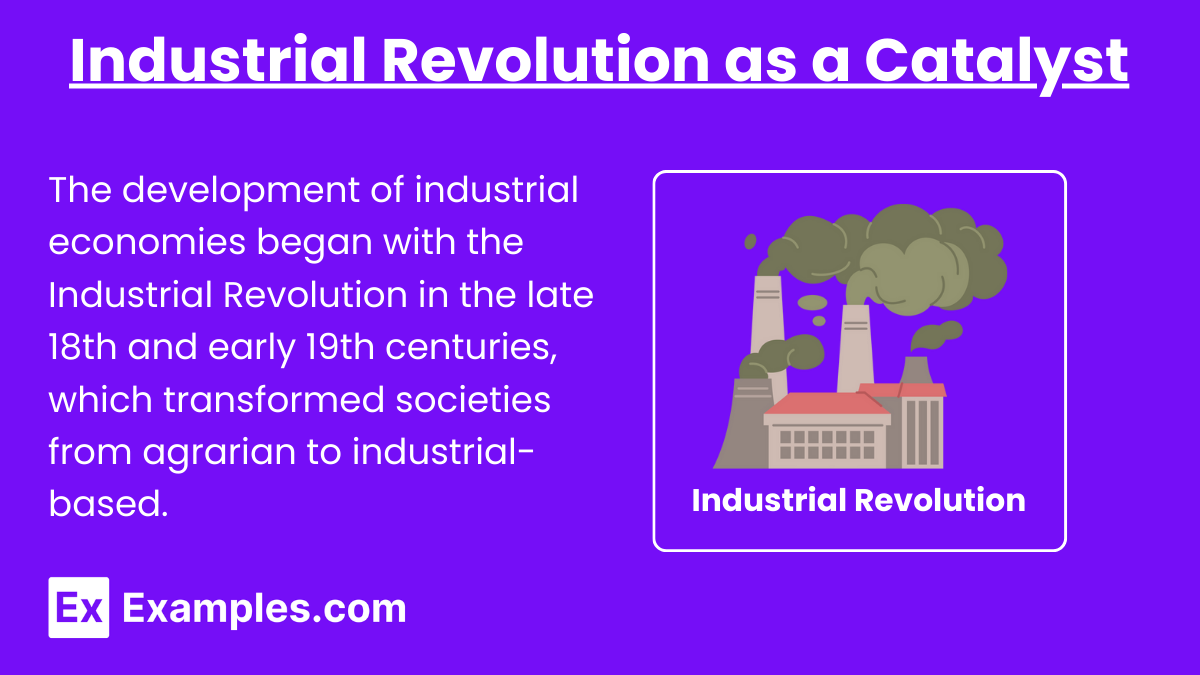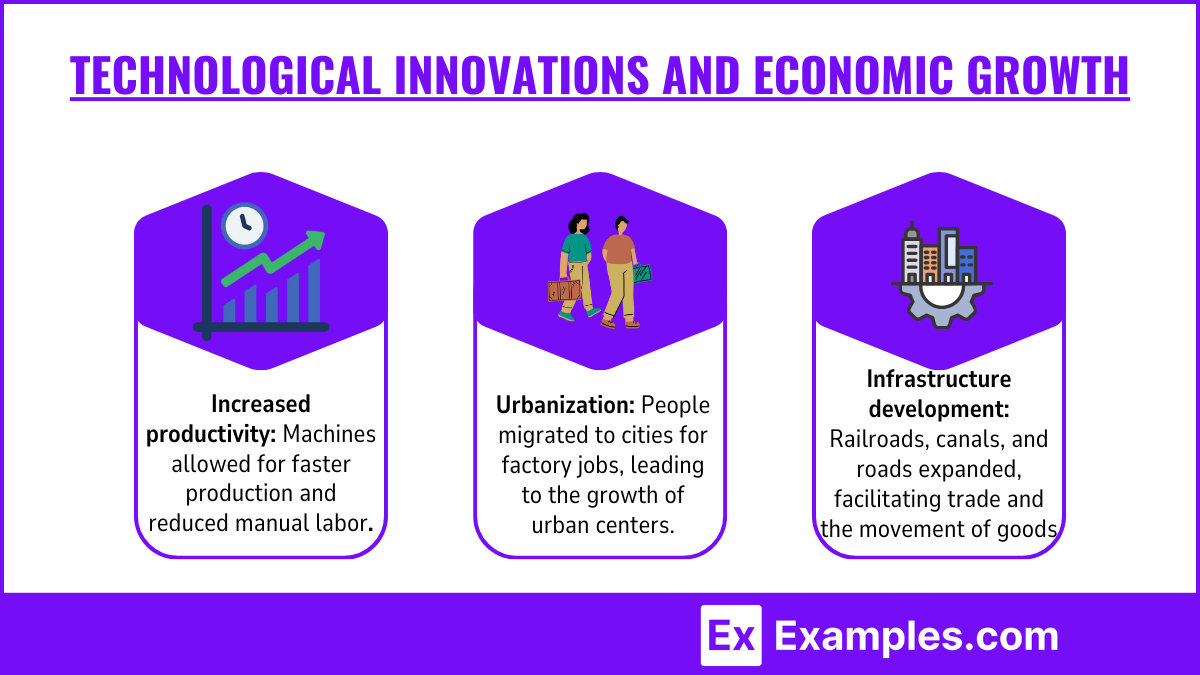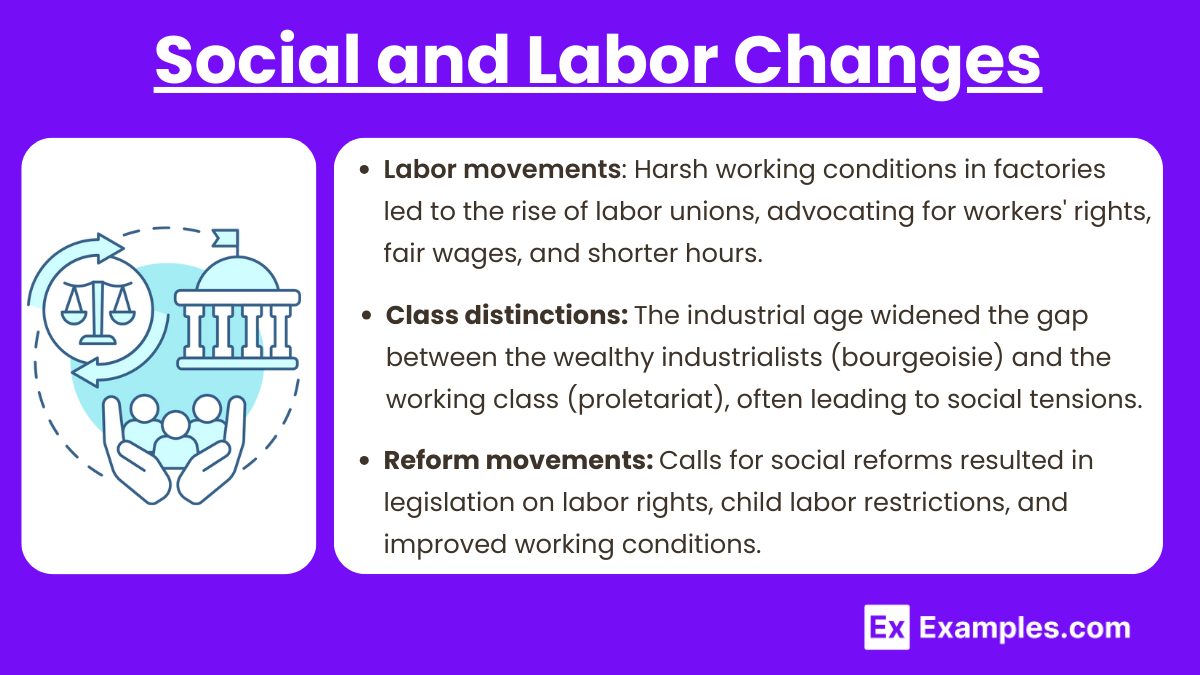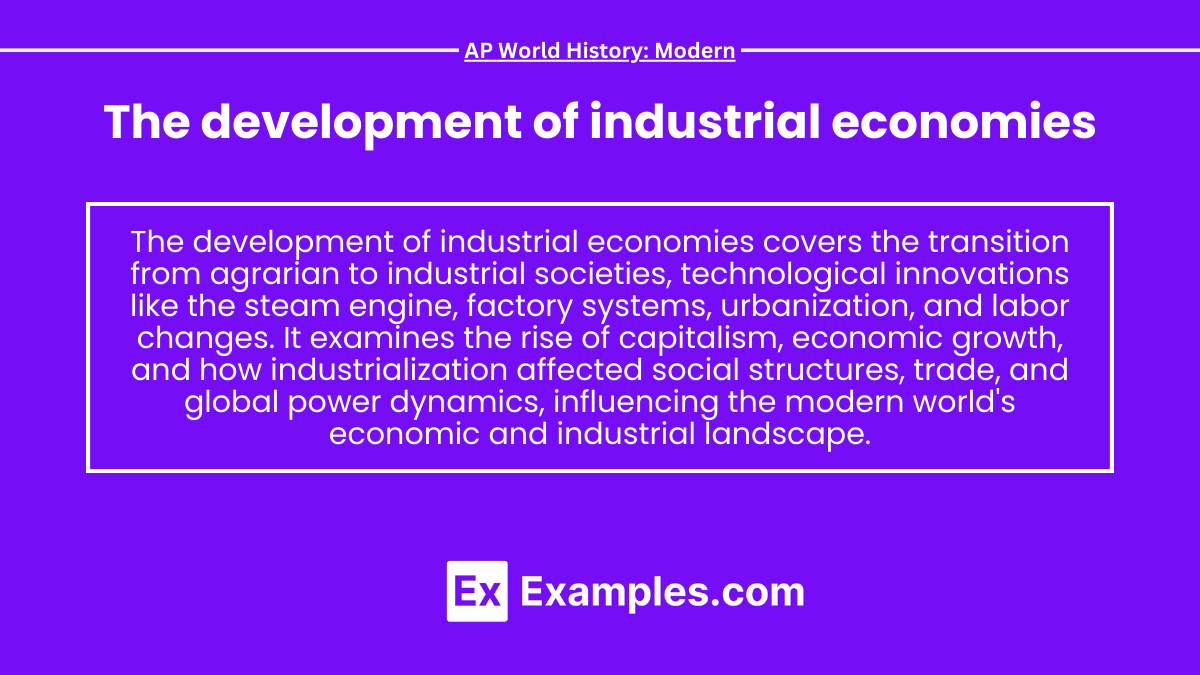The development of industrial economies marked a transformative period from the late 18th to early 20th centuries, driven by technological innovations, factory systems, and capitalism. This shift revolutionized production, urbanized societies, and expanded global trade. Industrialization spread from Britain to Europe, the United States, and Japan, profoundly influencing social structures, labor movements, environmental impacts, and colonial expansion worldwide.
Learning Objective
In studying “The Development of Industrial Economies” for AP World History: Modern, you should learn to identify the key technological advancements and innovations that fueled industrialization. Analyze how industrial economies transformed labor systems, urbanization, and production methods, and evaluate the social, political, and environmental impacts of industrialization. Additionally, explore how industrial economies reshaped global trade, resource extraction, and the relationship between industrialized and non-industrialized nations, contributing to economic inequalities and imperialism.
1. Industrial Revolution as a Catalyst

The development of industrial economies began with the Industrial Revolution in the late 18th and early 19th centuries, which transformed societies from agrarian to industrial-based. This shift, starting in Britain, introduced machinery, advanced production techniques, and factory systems that increased efficiency and output. The availability of coal, iron, and access to waterways facilitated this transition, making Britain a model for industrialization worldwide.
2. The Spread of Industrialization

Industrialization spread across Europe, the United States, and eventually Japan by the mid-19th century. Each region adapted industrial practices to suit their resources and needs. For instance:
- Western Europe: Countries like France, Germany, and Belgium adopted Britain’s techniques, focusing on coal and iron production.
- United States: The rise of railroads and the telegraph system helped link markets, while innovations like interchangeable parts and mass production fueled growth.
- Japan: The Meiji Restoration marked a period of rapid industrialization, with the government actively investing in modernizing industries.
3. Technological Innovations and Economic Growth

Technological advancements such as the steam engine, spinning jenny, and power loom revolutionized production methods. This led to:
- Increased productivity: Machines allowed for faster production and reduced manual labor.
- Urbanization: People migrated to cities for factory jobs, leading to the growth of urban centers.
- Infrastructure development: Railroads, canals, and roads expanded, facilitating trade and the movement of goods.
4. Capitalism and Economic Theories

The rise of industrial economies coincided with the emergence of capitalism. Adam Smith’s “The Wealth of Nations” (1776) provided the foundation for laissez-faire economics, advocating minimal government intervention. This philosophy encouraged:
- Private investment: Entrepreneurs invested in factories and machinery, leading to more production and profit.
- Free markets: Supply and demand governed prices, promoting competition and innovation.
- Global trade: Industrial economies sought raw materials from colonies and foreign markets, enhancing international trade networks.
5. Social and Labor Changes

Industrial economies significantly impacted labor and society:
- Labor movements: Harsh working conditions in factories led to the rise of labor unions, advocating for workers’ rights, fair wages, and shorter hours.
- Class distinctions: The industrial age widened the gap between the wealthy industrialists (bourgeoisie) and the working class (proletariat), often leading to social tensions.
- Reform movements: Calls for social reforms resulted in legislation on labor rights, child labor restrictions, and improved working conditions.
Examples
Example 1: Britain’s Industrial Revolution
Britain’s access to coal, iron, and waterways fueled factory production, leading to rapid industrial growth, urbanization, and technological advancements, establishing it as the world’s first industrial economy.
Example 2: Germany’s Industrial Expansion
In the late 19th century, Germany’s investment in heavy industries, railroads, and chemical production accelerated its industrial economy, making it a global leader in steel and machinery.
Example 3: United States’ Industrial Growth
The U.S. developed industrial economies through mass production, railroads, and technological innovations, transforming into a major industrial power by the early 20th century, with thriving steel and oil industries.
Example 4: Japan’s Meiji Industrialization
The Meiji Restoration (1868) rapidly industrialized Japan by adopting Western technologies, building railroads, and developing textile factories, transitioning from an agrarian society to a leading industrial economy.
Example 5: Soviet Union’s Five-Year Plans
The Soviet Union’s state-driven industrialization through Five-Year Plans (1928 onward) emphasized heavy industries, transforming it into a significant industrial economy despite high human and environmental costs.
MCQs
Question 1
Which factor most contributed to the start of the Industrial Revolution in Britain?
A) Abundant agricultural land
B) Access to coal and iron resources
C) Strong monarchy
D) Advanced military technology
Answer: B) Access to coal and iron resources
Explanation: Britain’s access to coal and iron fueled steam engines and machinery, essential for industrialization, making it the primary driver behind the rapid growth of industrial economies.
Question 2
What was a significant impact of industrial economies on urbanization?
A) Decrease in population
B) Improvement in rural life
C) Massive migration to cities
D) Reduction in factory jobs
Answer: C) Massive migration to cities
Explanation: Industrial economies led to job opportunities in factories, prompting people to migrate to cities, resulting in rapid urbanization and the growth of large urban centers.
Question 3
How did Japan’s Meiji Restoration contribute to industrialization?
A) It strengthened feudal systems
B) It encouraged Western technologies
C) It banned factory production
D) It isolated Japan from trade
Answer: B) It encouraged Western technologies
Explanation: The Meiji Restoration adopted Western technologies, modernized industries, and built infrastructure, transforming Japan from an agrarian society into an industrial economy.


